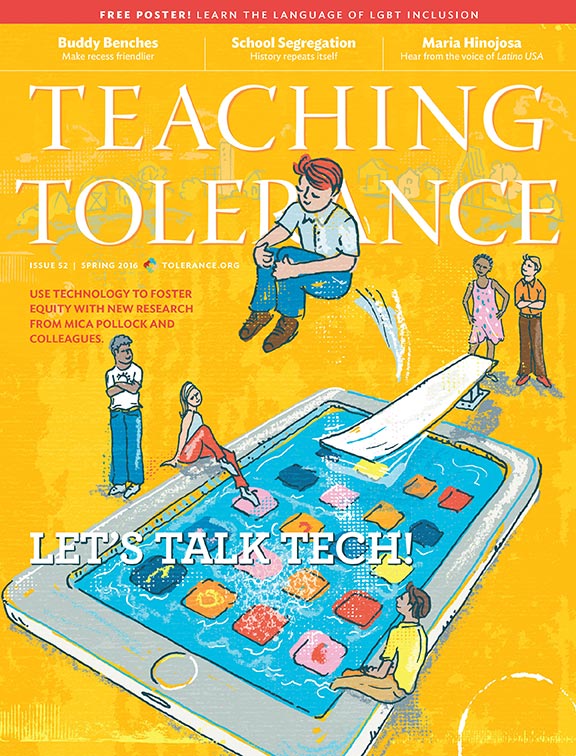Teaching Tolerance magazine examines ‘Smart Tech Use’ in the classroom
When it comes to technology in the classroom, educators shouldn’t be satisfied by the sight of students focused on the glow of a screen, but should ask what uses of technology actually help all students in diverse U.S. classrooms learn, grow and thrive, according to research highlighted in the latest issue of the Southern Poverty Law Center’s Teaching Tolerance magazine, released today.
The issue’s cover story, “Smart Tech Use for Equity,” explains the value in asking whether classroom tech use is “smart” from an equity perspective, and why this question is critical to ensure positive learning outcomes for all students. Author Mica Pollock of the University of California, San Diego, reports on the efforts of a pilot group of educators who conducted research to determine how technology affected their students’ thinking, learning, voice and achievement. Their results offer models for how teachers can ask deeper questions about the pros and cons of tech use for student learning and development.
“It’s not enough just to use technology in the classroom,” said Maureen Costello, Teaching Tolerance director. “Teachers need to look critically at their technology use to determine when – and for whom – it is providing positive results. A high-tech tablet isn’t always better than a paper tablet and a pencil.”
The Spring 2016 issue of Teaching Tolerance magazine can be read here.
“Cracking the Code,” explores another technology issue – the alarmingly low number of girls pursuing computer science as a career path. The article looks at the way computer science courses are taught and marketed as well as other possible factors behind this low number.
The magazine also looks critically at Dr. Ruby Payne’s strategies for teaching low-income students. Payne’s self-published book, A Framework for Understanding Poverty, has been a popular tool for educators hoping to engage students living in poverty. “Questioning Payne” examines the serious criticisms leveled by a growing number of educators and scholars concerned that Payne’s strategies rely on stereotypes and offer little evidence that they work. In an online sidebar, Dr. Joseph A. Taylor reviews the empirical research and methodology cited by Payne on her website and in the latest edition of her book.
“Wanted: Playground Buddy” examines a new tool for ensuring inclusion on the playground: the Buddy Bench. The bench is where a student can sit when he or she needs a playground buddy, helping make recess more inclusive and fun. Educators, however, still must do their part to create and encourage a school culture of empathy and inclusion.
Other articles include an analysis of what happens to students when community schools close their doors; an examination of school enrollment patterns in the Deep South; and an interview with journalist and educator Maria Hinojosa.
Teaching Tolerance magazine, published three times a year, is the nation’s leading journal serving educators on diversity issues. It is distributed free of charge to more than 410,000 educators nationwide.

